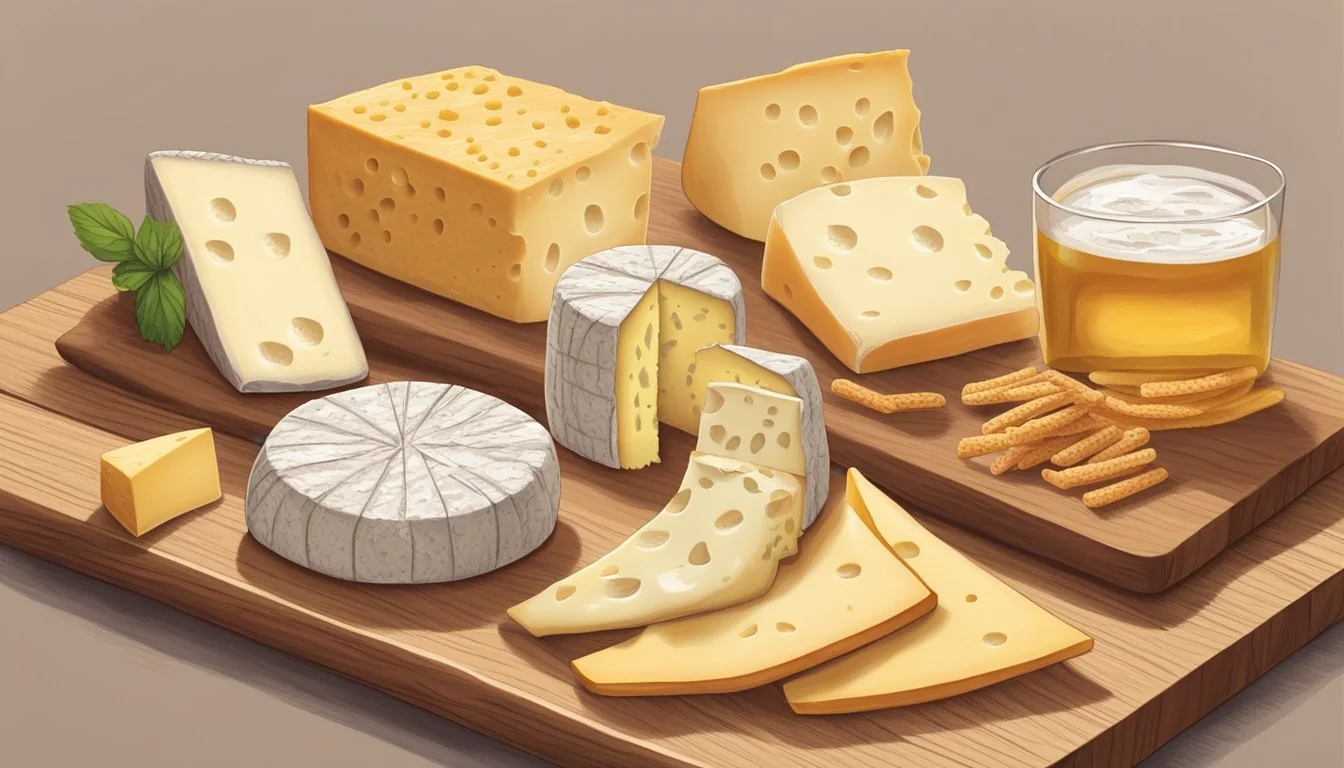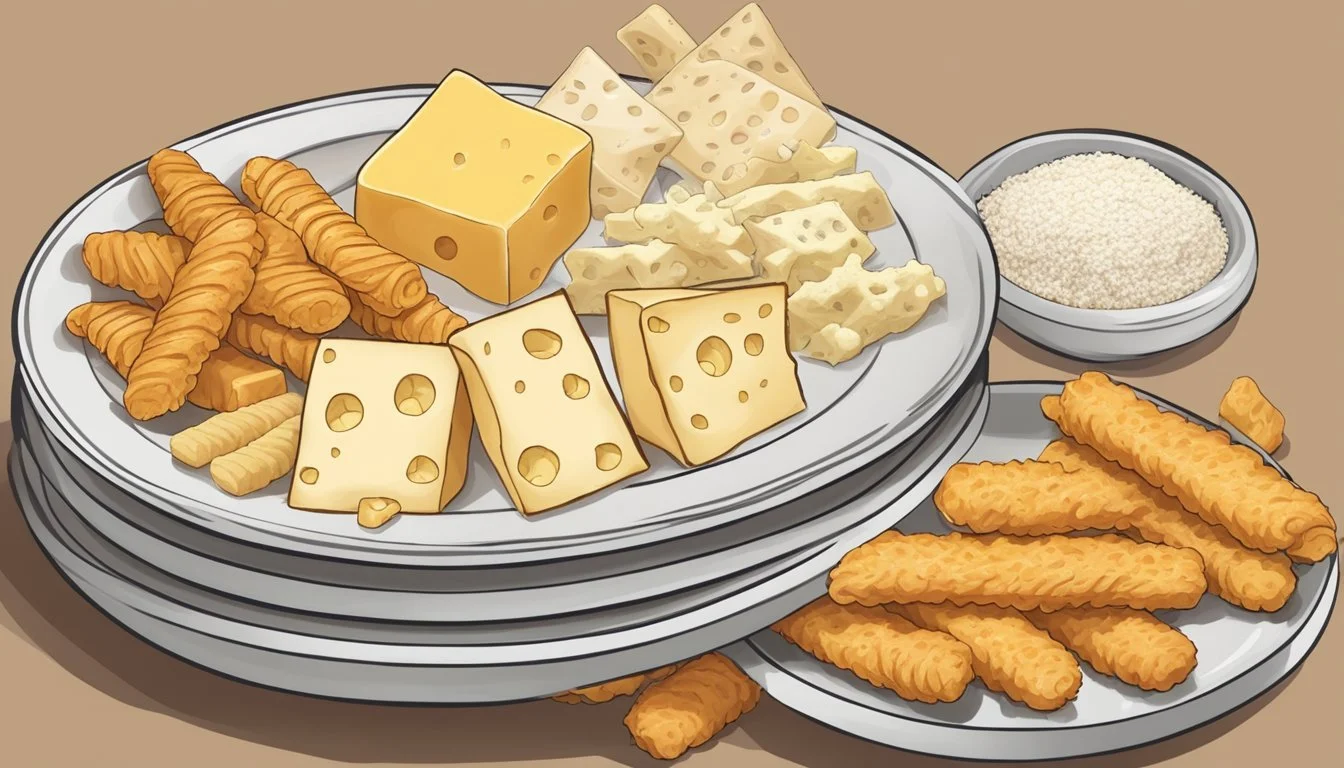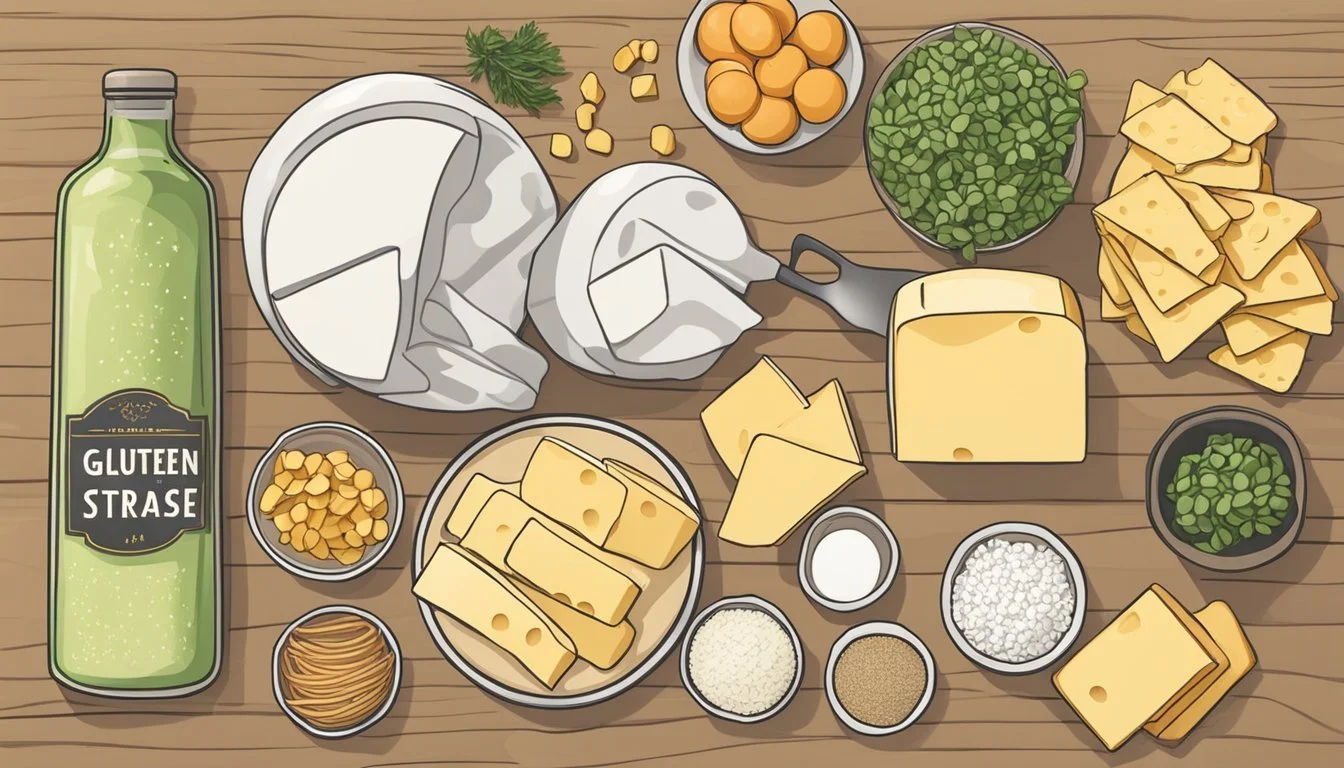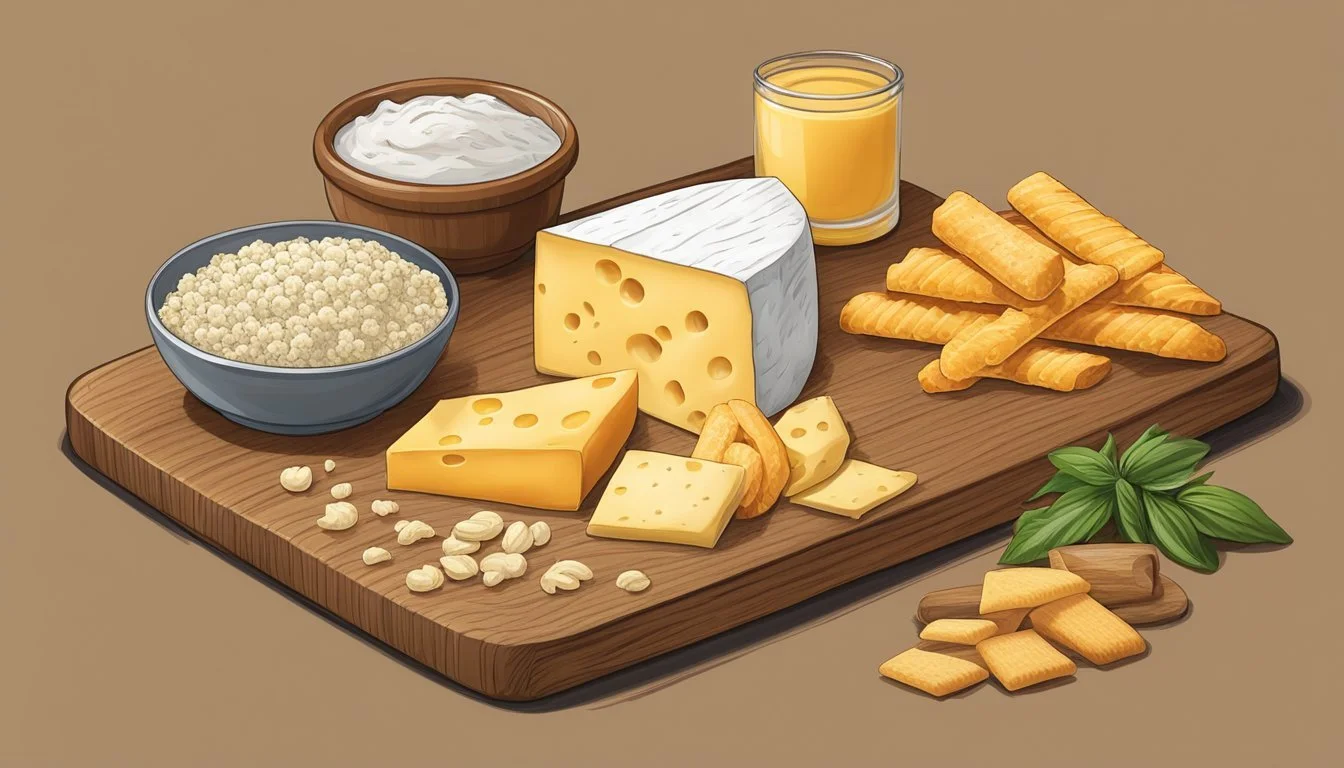Are Cheese Straws Gluten-Free?
Understanding Their Ingredients and Alternatives
Cheese (What wine goes well with cheese?) straws, a popular savory snack, often come into question regarding their gluten content. Traditionally, cheese straws are made from a dough containing wheat flour, which means they are not gluten-free. However, with the rise in gluten sensitivity and celiac disease, many people seek gluten-free alternatives to enjoy these crispy treats without compromising their health or flavor expectations.
Adapting the classic recipe to be gluten-free involves replacing wheat flour with gluten-free alternatives such as almond flour, gluten-free all-purpose flour, or a mix of gluten-free flours like rice and tapioca. Additional binding agents, like xanthan gum, may be required to mimic the texture that gluten provides in the standard recipe. The key challenge is to maintain the delicate balance of crispiness and flavor that makes cheese straws a delightful appetizer or snack.
Gluten-free cheese straws are achievable and can cater to those with dietary restrictions while still providing a satisfying crunch and a rich cheese flavor. The key is careful selection of gluten-free ingredients and adherence to a recipe that is specifically designed for gluten-free baking, ensuring that the resulting cheese straws can be enjoyed by everyone, regardless of their dietary needs.
Understanding Gluten-Free Diets
A gluten-free diet excludes the protein gluten, found in grains such as wheat, barley, and rye. This diet is essential for managing symptoms and conditions associated with gluten intolerance.
Gluten Free: Basics
Gluten is a protein present in certain grains, and a gluten-free diet involves the strict avoidance of all products that contain these grains. Gluten-free baking often requires alternatives such as rice flour, almond flour, and cornstarch to replace wheat flour. Additionally, xanthan gum is commonly used as a substitute for the elasticity and stickiness that gluten provides in doughs and batters.
Benefits of Gluten-Free Snacking
Choosing gluten-free snacks can contribute to overall well-being for those with gluten sensitivities. Snacking on gluten-free items may reduce the risk of cross-contamination and the discomfort that follows gluten ingestion for sensitive individuals. It also encourages the exploration of a diverse range of foods, many of which are naturally gluten-free and nutrient-dense.
Challenges in Gluten-Free Baking
Baking without gluten is challenging due to gluten's crucial role in texture and structure. Gluten-free recipes often require precise measurements and multiple flour blends to achieve a desirable consistency. A common issue in gluten-free baking is achieving the right rise in doughs, for which leavening agents like baking powder and baking soda must be carefully balanced.
The Roots of Cheese Straws
Cheese straws are a savory snack deeply rooted in tradition, often associated with the American South and festive occasions such as Christmas and other holidays.
Historical Significance
Cheese straws are believed to have originated in the early 1800s in the Southern United States. They reflect the region's English heritage, tweaking the traditional English biscuit recipe by adding cheese and spices. Initially, cheese straws were enjoyed by the upper classes as a delicacy, but over time, they became a staple at various social gatherings.
Regional Variations
Each region puts its own spin on the basic cheese straws recipe, creating a rich tapestry of variations. In the American South, cheese straws are a commonplace part of a traditional Christmas spread. They are typically made with sharp cheddar cheese, flour, butter, and a pinch of cayenne pepper for heat. However, regional variations might include different types of cheese or the addition of seeds and spices.
American South: Traditional recipe with sharp cheddar, butter, and cayenne pepper.
Other Regions: Adaptations might include various cheeses like blue cheese and add-ins like pecans or sesame seeds.
Cheese Selection for Cheese Straws
The choice of cheese is crucial for crafting the perfect cheese straw, as it imparts distinct flavors and textures. With a range of cheeses suitable for these savory snacks, (What wine goes well with savory snacks?) selecting the right cheese type can greatly enhance the end result.
Cheddar: A Popular Choice
Cheddar is a widely favored option for cheese straws due to its sharp, pronounced flavor. Sharp cheddar cheese in particular offers a robust taste that remains evident after baking. When using cheddar, it's advisable to use grated cheddar cheese for a more uniform texture and consistent flavor distribution throughout the straws.
Parmesan and Its Charms
Parmesan, known for its hard texture and nutty, salty profile, brings an elegant layer of flavor to cheese straws. Its low moisture content allows for a crispy finish, making it an excellent choice for baking. Cheese straws with parmesan present a delightful umami experience, appealing to those who prefer a subtler cheese presence.
Dairy-Free Cheese Options
For those seeking dairy-free alternatives, a variety of non-dairy cheeses are available to accommodate dietary restrictions. Dairy-free cheese options should mimic the texture and melting properties of traditional cheese to ensure the quality of the cheese straws is maintained. When selecting a dairy-free cheese, one may consider varieties that are specifically designed to melt and brown similar to their dairy-based counterparts.
Ingredients and Substitutions
Creating gluten-free cheese straws requires specific ingredient substitutions to mimic the texture and flavor of traditional recipes. Here's how one can achieve the perfect gluten-free snack with alternative flours, binding agents, and flavor enhancers.
Gluten-Free Flour Alternatives
Traditional cheese straws often use all-purpose or plain flour, which contains gluten. To make gluten-free cheese straws, one must use gluten-free flour blends. A popular choice for baking is a mix that may contain rice flour, tapioca flour, potato starch, and sometimes xanthan gum to add elasticity. These blends are designed to approximate the properties of wheat flour.
Common Gluten-Free Flours:
Coconut flour
Rice flour blends
Gluten-free all-purpose blends
For puff pastry types of cheese straws, one can opt for a pre-made gluten-free puff pastry dough that is readily available in the market.
Binding Ingredients
The role of binding ingredients in cheese straws is to hold the mixture together and create the desired texture. Eggs, particularly egg yolks, are commonly used for this purpose. They not only bind but also add richness to the dough.
Binding Ingredient Options:
Egg yolk (adds richness and color)
Water (for vegan options, though may not bind as effectively)
In some recipes, butter can act as both a fat and a binding ingredient, aiding in the creation of the straws' delicate layers.
Flavor Enhancers
When it comes to the taste of cheese straws, the key is a balance of cheesy goodness and seasoning. Gluten-free cheese straws can be just as flavorful with the right enhancements.
Seasoning:
Salt (sea salt or regular salt for taste)
Pepper (black or white, finely ground)
Cayenne pepper or paprika (for heat)
Garlic powder (for depth of flavor)
Cheese Considerations:
Strong, mature cheeses (like cheddar) offer a bold flavor.
Finely grated cheese ensures even distribution throughout the dough.
These tweaks to traditional ingredients allow individuals with gluten intolerance to enjoy cheese straws without foregoing taste or texture.
Preparation Techniques
The creation of gluten-free cheese straws involves making dough that can achieve a similar consistency and flavor to traditional wheat-based recipes. Precision in measurements and procedure is key to ensuring the end product is both delicious and structurally sound.
Creating the Perfect Dough
To begin, one should gather all ingredients and use a food processor to blend them effectively. For a cohesive dough, mix the dry ingredients, which usually include gluten-free flour, baking powder, and seasonings like garlic powder and cayenne for extra flavor. Next, add the shredded cheese to the mixture in the food processor; pulse until the mixture resembles breadcrumbs. With the motor running, introduce pieces of cold butter, and continue to process until the mixture comes together into a dough ball.
Shaping Your Cheese Straws
After the dough reaches the desired consistency, it is time to shape the cheese straws. Lay out a piece of wax paper and roll the dough to a 1/4 inch thickness using a rolling pin. For uniform shapes, one can either use a knife to cut strips or a cookie press fitted with a star tip for a more decorative appearance. To ensure equal baking, the size and shape of each straw should be consistent.
Baking Essentials
Preheat the oven to the temperature specified in the chosen recipe, often between 350ºF and 375ºF. Line baking sheets with parchment paper to prevent sticking, and arrange the cheese straws with space in between to allow for proper air circulation. Baking times may vary, but typically range between 12 and 15 minutes, or until the straws turn golden and puff up slightly. It is crucial to let the straws cool on a wire rack after baking to maintain crispness.
Storing and Serving Cheese Straws
Correct storage is essential for preserving the crispy texture of cheese straws, while the right presentation can make them a hit at social gatherings.
Preserving Freshness
To maintain the crunchiness of cheese straws, it is crucial to store them in an air-tight container after they have cooled completely. They can be kept at room temperature for up to a week with this method. For extended storage, cheese straws can also be frozen. Simply place them in a freezer-safe airtight container or a sealed plastic freezer bag, where they will stay fresh for up to a month. To enjoy them again, reheat the straws in the oven to restore their crisp texture before serving.
Serving Suggestions for Social Gatherings
Cheese straws are a versatile snack that can be a delightful addition to a buffet table or as a nostalgic treat at a baby shower, invoking warm memories of recipes passed down from a beloved grandmother. Serve them in a tall glass or a decorative tray to highlight their unique shape. For visual appeal and added taste, they can be accompanied by a variety of dips and spreads. As a party food, cheese straws can be arranged creatively to match the theme of the event, ensuring they are not only a delicious choice but also contribute to the festive atmosphere.
Alternative Cheese Straw Variations
When accommodating dietary restrictions, one can find or create variations of cheese straws that cater to gluten-free and vegan diets without sacrificing flavor or texture.
Gluten-Free Vegan Options
Gluten-free vegan cheese straws offer a solution to those who avoid animal products and gluten. One can use gluten-free flour blends or almond flour as a solid base for the dough. Vegan cheese substitutes, nutritional yeast for added flavor, and vegan butter or margarine can replace dairy components in the dough.
Ingredients for Gluten-Free Vegan Cheese Straws:
Gluten-free flour blend or almond flour
Vegan cheese (shredded)
Nutritional yeast (optional for cheesy flavor)
Vegan butter or margarine
Seasonings (e.g., salt, cayenne pepper)
One can mix these ingredients until a dough forms, then roll it out onto parchment paper and cut it into strips before baking.
Adapting Traditional Recipes
Traditional cheese straw recipes are not inherently gluten-free due to their use of all-purpose flour. To adapt these recipes, one can simply substitute the flour with a gluten-free alternative while maintaining the other ingredients like butter, cheese, and seasonings.
Steps to Adapt Traditional Cheese Straw Recipes:
Replace all-purpose flour with gluten-free flour.
Keep the cheese, typically cheddar, and butter the same or use dairy-free alternatives if needed.
Follow the usual steps of combining ingredients to form a dough, rolling out, and cutting into straws.
Using this adapted approach, people with gluten sensitivities can still enjoy the same savory snack with a crisp texture and rich flavor, assured that it aligns with their dietary needs.
Final Thoughts and Reviews
In assessing whether cheese straws are gluten-free, consumer feedback and expert recommendations converge to suggest that gluten-free options can be satisfying treats as well as align with dietary requirements.
Consumer Feedback
Consumers with gluten intolerance or celiac disease often express relief and satisfaction in finding cheese straws that maintain the expected flavor and texture without compromising their health. They generally review gluten-free cheese straws positively, particularly when these snacks offer a warm, crisp bite similar to their traditional wheat-based counterparts. Reviews frequently mention a preference for cheese straws that use high-quality, aged cheese for an enhanced savory taste.
Texture: Often highlighted in reviews; a crisp, flaky outcome is praised.
Flavor: The rich, cheesy taste is a recurring point of satisfaction among consumers.
Expert Recommendations
Experts in gluten-free baking recommend using specific gluten-free flours combined with high-quality, shredded cheese to achieve the best results when making cheese straws. They note the importance of closely following baking instructions to prevent a gritty or unpleasant texture, which can sometimes occur with gluten-free ingredients. They often suggest storing the baked cheese straws in an airtight container to maintain freshness and crispness.
Baking Temperature: Advised to be precise, as it influences texture.
Ingredients: Selection deemed critical; well-aged cheese and a reputable gluten-free flour blend are recommended for optimal taste and consistency.








